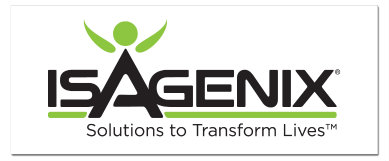Rolfing
Rolfing is a form of deep-tissue, structurally oriented bodywork that was created by Ida P. Rolf, Ph.D., a Columbia University trained biochemist in the 1930s. When she developed this therapy, Dr. Rolf was influenced by her knowledge of Hatha yoga, the Alexander technique, osteopathy, and homeopathy. She called her own approach structural integration because it dealt with the way the body's structure affects its function. It didn't take long, however, for the public to start calling it Rolfing–and the nickname stuck.
In 1971, Dr. Rolf established the Rolf Institute of Structural Integration, now located in Boulder, Colorado, with adjunct institutes in Munich, Germany, and Sao Paolo, Brazil, to oversee the standardization of the Rolfing method and the training of practitioners, known as Rolfers.
Today, Rolfing is employed primarily to help reduce stress and ease mobility, address posture problems, and reduce musculoskeletal and back pain. Proponents suggest that it can relieve a variety of other ailments as well.
How Does Rolfing Work?
Rolfing is based on the premise that physical and emotional stress–as well as gravity–can throw the body out of vertical alignment and cause muscles and the connective tissue known as fascia to become rigid and inflexible. (Fascia encases muscle and connects muscle to bone.) These problems can then lead to more stress, illness, and a loss of general well-being.
Rolfing aims to realign the body by using intense pressure and stroking to stretch shortened and tightened fascia back into shape. The goal is to make the fascia softer and more flexible, and to restore its natural balance in relation to muscles, tendons, and bones.
Practitioners manipulate the fascia rather than the muscles themselves. Pressure from the practitioner's knuckles, knees, elbows, or fingers on this connective tissue is said to release deeply held tension and stress. Rolfing results in ease of movement, improved posture, and overall emotional and physical health.
Health Benefits of Rolfing?
There are few controlled studies of Rolfing that compare it with other therapies or with no treatment at all. Proponents, however, firmly contend that Rolfing can increase mobility, ease breathing, relieve stress, increase energy, and generally improve a person's well-being.
Many patients find that Rolfing aids in easing chronic back, neck, shoulder, and joint pain, as well as in relieving repetitive stress injuries and headaches. Some advocates also report that Rolfing helps digestive problems and asthma.Because of its clear focus on muscular problems, the therapy is often included in sports medicine treatment programs.
What Can I Expect From Rolfing?
When you first meet with a practitioner, you will probably begin with a discussion of your medical history, including any former injuries, such as broken bones. The conversation may also include such topics as how you tote your shoulder bag and where you "carry your stress." The Rolfer will probably ask you to undress to your underwear and have you lie on a massage table for the treatment.
The treatment itself may begin with the Rolfer manipulating the upper half of your body to free any restrictions around the rib cage. This will help you breathe more easily, which will set the tone for the next sessions.
Typically, a full Rolfing course involves 10 sessions of 60 to 90 minutes each. Sessions one through three, known as the "superficial" sessions, usually focus on the surface layers of the fascia. These layers are associated with the muscles that are near the surface of the body. Sessions four through seven involve the deeper fascia and muscles, and are called the "core" sessions. Sessions eight through ten are the "integrative" sessions. They aim to synthesize the work of the earlier sessions.
As the sessions progress, the course of treatment will involve an increasing amount of pressure on the fascia. Because the practitioner is working so deeply, the treatment can be painful–rather than relaxing–but it should never be unbearable. And you should feel energized after each session.
In recent years, advanced Rolfers have been exposed to an updated curiculum that puts less emphasis on the 10-session model. The curriculum addresses a wider variety of manual therapies, including cranial, visceral, and joint manipulation.
Cautions about Rolfing
- It is important to note that although Rolfers seek to help you release stress and tension, they are not psychotherapists and should not be sought to treat deep-seated emotional problems.
- Rolfing should be avoided by those with rheumatoid arthritis, or other serious inflammatory conditions.
- If you are more than three months pregnant, work only with a senior practitioner who has the experience to modify the usual Rolfing techniques for your safety and comfort in pregnancy.
Choosing a Rolfing Practitioner
The Rolf Institute of Structural Integration oversees the certification of Rolfers, although there are practitioners who do Rolfing without certification. The basic training and certification program for Rolfers takes a minimum of one and up to two years, with additional training available for those interested in advanced certification.
If Rolfing is performed by a practitioner who is also a physical therapist or chiropractor, or if your primary-care physician recommends Rolfing, some HMOs may provide coverage. Call your insurance company about its policy.




